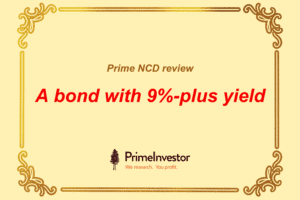Rather than focus on what a multi-asset alloction does, it is vital for you to know what difference the fund can make to your portfolio allocation and returns. If you don’t, you only end up adding funds to your portfolio without making any meaningful difference.
Whenever the returns of any category tops equity fund returns, investor interest in such a category goes up. It’s the turn of multi-asset allocation funds now. And going by the number of queries we have received, we know many of you want to know whether to invest in this category. The queries have revolved around the following:

- Why we have not rated the multi-asset category
- Why we do not have a buy/hold/sell call on these funds in our review tool
- Whether the new funds from Motilal or Nippon are options to consider
I will quickly respond to these questions first but go on to substantiate the same through the limited performance and portfolio data that we have.
- Most of the funds in the multi-asset allocation category do not have a track record. They are either new or shifted to this category (from an entirely different mandate) when SEBI introduced new categories effective June 2018. For example, SBI Magnum MIP Floater became SBI Multi Asset. HDFC Multiple Yield re-categorized itself as HDFC Multi Asset. ICICI Pru Dynamic became ICICI Pru Multi Asset and so on. This was not just a change in name but a change in mandate – in terms of adding gold and changing individual asset allocation limits. Hence, most of them do not even have a rolling 3-year return record for us to test them quantitatively. We do not rate funds without a minimum 3-year record in equity and hybrid categories.
- For the same reason, we do not have an opinion on these funds.
- We think NFOs, unless unique or showcase tremendous promise, can be avoided or watched for performance. There need be no rush to invest in them. In the case of Nippon or Motilal Oswal, the addition of international equity differentiates them from the rest and yet, there is nothing too unique that cannot be achieved through your own portfolio diversification.
What you may not know about multi-asset allocation funds
#1Taxation status could be equity or debt
Not all multi-asset allocation funds have a minimum 65% equity as mandate. Of the 11 multi asset funds (2 of which are either recent or an NFO), only 5 (Axis, HDFC, ICICI Pru, Tata and UTI) have stated that they will hold a minimum 65% in equity.
The rest, as it should rightfully be, can go far lesser in equity. That essentially means that you may not get equity taxation in some of the multi-asset funds. Many of you are unaware of this and as far as our interactions with you go, most of you are very ‘sensitive’ to taxation and are reluctant to handle a long-term product with equity but with debt-like tax status.
There are also about at least 5 FoFs from Franklin, IDFC, Quantum, Aditya Birla Sun Life, and HSBC which have an option to use gold. Of these, Franklin and Quantum are the ones that steadily use all 3 asset classes. Here again, as FoFs their tax status irrespective of how much equity they hold, will be that of debt.
#2 A multi-asset allocation fund may not necessarily be diversified
In their urge to capture equity returns adequately and maintain equity tax status, some of the multi asset funds do try to hold higher equities. For example, Axis Triple Advantage has its mandate to invest at least 65% in equities and hence always seeks to maintain it. As a result, its average gold holding is lower than say SBI Multi Asset, which has held far lower equity. This means that the fund is not actually changing allocations much based on market cycles and that it then becomes very close to an equity-oriented hybrid fund in terms of performance.
So, if you believed that your fund will dynamically shift between asset classes to contain falls or capture upside, that may not happen. Likewise, other than Franklin and Quantum Fund of Fund, the other fund of funds that have the option of taking exposure to gold, have hardly done so.
#3 Holding a multi-asset fund may hardly diversify your portfolio
A multi asset fund is unlikely to meaningfully diversify your portfolio unless it accounts for a majority of your portfolio. For example, if a multi-asset fund, on an average held 15% to gold, and this fund accounts for say 15% of your portfolio, your gold allocation is 2.25%! You are hardly hedging your portfolio with gold if that was your idea nor will dynamic asset shifts within this fund make any meaningful contribution to your returns.
This is an important point that most of you miss. Rather than focus on what the fund does, it is vital for you to know what difference the fund can make to your portfolio allocation and returns. If you don’t, you only end up adding funds to your portfolio without making any meaningful difference.
Added to this, it is important to know that you don’t achieve style diversification (growth or value, focused or diversified, large or midcap) by holding such hybrid funds.
How multi-asset allocation funds fare
While multi-asset funds do not have much of a track record, we thought we could still show data comparing similar investments that you may have in your portfolio. Please note that it is pointless for us to compare longer periods of returns as most of these funds were not multi-asset funds earlier.
For this purpose, we studied the average holding of equity, debt and gold holding in these funds over the past year. On an average, this came to 58% equity, 27% debt and cash and 15% in gold. We simply tried to replicate this with 3 funds – A Nifty index fund (UTI Nifty Index), gold mutual funds india (we took the ETF from Quantum given its longer record than the FoF and lower cost) and a banking & PSU debt (Axis) from our recommended list.
We took the rolling 1-year return since June 2018 to date. We did not want to compare returns before June 2018, when multi-asset allocation funds had vastly different attributes.
You will see a steady outperformance of the asset allocated portfolio compared with the average returns of multi-asset funds. Of course, there are 2 limitations to this analysis: data points are insufficient and second with newer multi-asset funds having international mandate, they might behave differently.
We also looked at 3-year rolling returns for at least 2 funds that we know had a steady allocation to all 3 assets and ran the multi asset mandate well before the SEBI category came in. The data for that, with our portfolio of 60:25:15 in equity/debt/gold gave the following:
The Franklin fund fell by the wayside as its debt holding has one of the closed debt funds. But even the Axis fund comparison suggests that an asset allocated portfolio would have delivered higher.
Needless to say, rebalancing, if done regularly to your own asset-allocated portfolio, would have yielded even better. To compare the post-tax returns here would not be correct since your asset allocation to debt and gold will not be the same if you simply invested in the multi-asset fund – whether with a 15/20/25 percent allocation. The idea here is to see fund performance alone and, on this count, the performance thus far has not been too inspiring.
This is one primary reason why we feel, based on current data, your own asset allocated portfolio can deliver better.
Where they stand with other hybrid categories
We also compared multi-asset funds with other relevant hybrid categories. Here too, given the limited record that multi-asset allocation funds have, we took the rolling 1-year returns from June 2018 to August 2020. The performance looks like this:
It is noteworthy that a chunk of the above period was volatile and hence any high-equity allocation would have suffered more.
The above data suggests a few things:
- Both conservative hybrid and equity savings do a good job of containing volatility better, with hybrid conservative also delivering better average returns.
- Multi-asset allocation funds are not very different from balance advantage/dynamic asset allocation as far as their performance go. Their volatility is similar and so is the average return. The presently higher returns compared to the balanced advantage category are primarily on account of gold.
- While the above period may be too short to compare them with aggressive hybrid, for the long haul clearly aggressive hybrid scores, the near-term volatility notwithstanding.
What are we trying to say through the above data? You should be clear in your objective of what you want your fund to achieve in your portfolio. For example, if you had a dynamic allocation fund, then there may be little need to add a multi-asset fund, as things stand. Or for that matter, if you had a gold fund, besides separate allocation to debt and equity, not much is achieved by adding 10% or even 20% to a multi-asset fund.
Summary
In summary, if the above article comes across as being too negative about multi-asset funds at this juncture, we have our reasons:
- One, data thus far suggests that you can do well with your own asset allocation and may not even need any dynamic asset managing fund if you can rebalance. Please read our article on rebalancing here.
- Two, we see this as a category that AMCs took to, only because SEBI introduced it as a category. And that would mean adding one more scheme to an AMC’s basket. A new category allows garnering more AUM from a business perspective.
- Three, we have seen funds jump from entirely different categories to multi asset or even close the category after having created a fund. We already gave examples of such changed categories earlier. Another example would be Edelweiss Prudent Advantage fund, a diversified equity fund that became Edelweiss Multi Asset Allocation fund after SEBI’s new categorization. In July 2019, the same fund became Edelweiss Aggressive Hybrid fund.
So what is the takeaway?
- We are not undermining the importance of asset allocation. But we would like you to question yourself as to whether it is best served with a multi-asset fund or kept simple with good funds from each asset class put together – providing you the flexibility to change one if it is not doing well for you and preventing any concentration to a single fund. You could look at our Prime Funds to build your own asset-allocated portfolios or pick one from our ready-to-use portfolios.
- We think only few fund houses are serious about providing a hybrid product that is of value to investors rather than being an additional scheme to garner AUM.
We do find some individual funds – like Quantum or SBI promising. We will continue to watch this space and will rate the category once track record is achieved.
Even so, you must ask yourself – ‘what value does this fund add to my portfolio’, rather than be lured by returns or the fanciness of the theme.







Comments are closed.